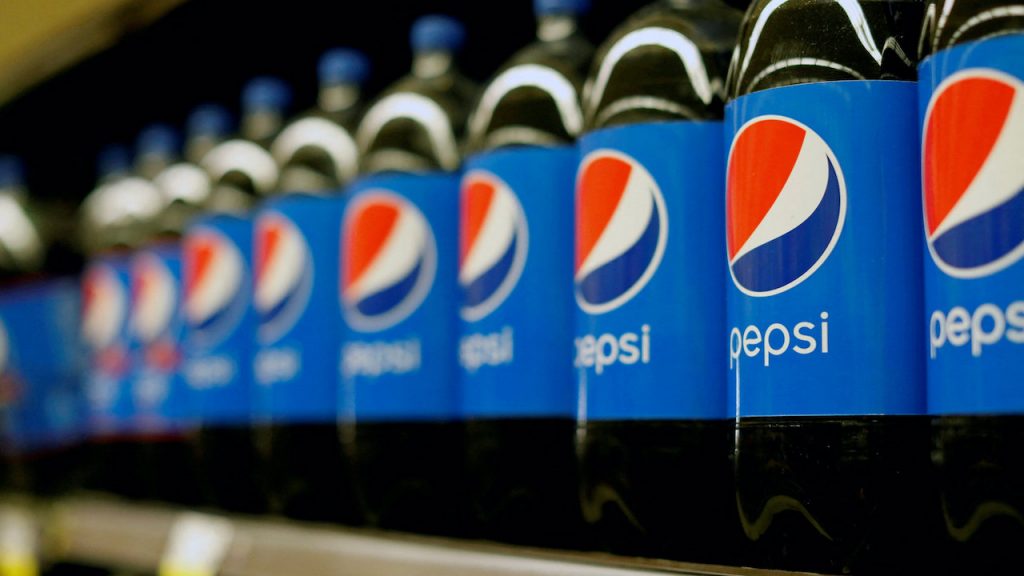What lies behind PepsiCo’s layoff signal?
Since the beginning of this year, the Silicon Valley technology industry in the United States has experienced a wave of layoffs, causing hundreds of thousands of people to lose their jobs. Under the double attack of high inflation and a weakening economy, PepsiCo, which has repeatedly raised its annual revenue outlook, has also shown signs of cutting labor costs, which seems to imply uneasiness in the food industry. From this point of view, the essential consumer goods industry, which is not too affected by the general environment, also has to cut down on “food and clothing” to survive the cold winter.
Manpower Cuts
According to reports, American catering giant PepsiCo will lay off hundreds of employees in the snack and beverage department of its North American headquarters, which is expected to affect its food and beverage business in Chicago.
In addition to Pepsi-Cola, PepsiCo’s products also include Gatorade drinks, Lay’s potato chips and Quaker oatmeal. As of December 25 last year, PepsiCo recruited about 309,000 people worldwide, including 129,000 in the United States.

According to reports, PepsiCo stated in an internal document sent to employees that the purpose of layoffs is to simplify the organizational structure so that the company can operate more efficiently. People familiar with the matter also said that the layoffs in the beverage business will be relatively large, because the snack department has already cut some positions through the voluntary retirement plan.
Previously in September this year, it was reported that PepsiCo might take some cost-cutting measures for economic reasons, and the company planned to offer employees over 55 years old the opportunity to buy out their seniority. And if business conditions deteriorate further, further layoffs will be considered.
After the news came out, Pepsi rose by 0.11% in the after-hours trading of US stocks. U.S. stocks closed on Monday, and Pepsi closed down 1.38%, with a price of $183.12 per share.
PepsiCo has yet to respond to news of layoffs and the company’s future plans. In fact, the reasons for Pepsi’s layoffs are actually similar to those of technology companies. The global economic downturn has led to a decline in consumer base and consumer confidence, and the company’s revenue scale has also been affected and impacted accordingly. Out of the consideration of maintaining the business, it is quite normal to implement layoffs in stages.
It is worth mentioning that, apart from Pepsi, many peers are also cutting back on “food and clothing”. PepsiCo’s main rival, Coca-Cola, implemented a restructuring plan in November that included voluntary employee dismission and a downsizing product portfolio. In addition, food companies such as Beyond Meat and Impossible Foods in the United States have also revealed layoff plans, further showing the spread of cost risks in the food industry.

Raise Prices to Fight Inflation
Since this year, American technology companies have been the first to start the “winter mode”. According to statistics, American technology companies have announced layoffs of more than 60,000 people, which is close to the annual unemployment level of 65,000 people during the financial crisis in 2008 and 2009.
At the same time, the chill has also spread to the media industry. Facing pressure from a slowdown in advertising, economic concerns and the high cost of streaming media, major media companies and film and television companies have turned to cost-cutting and layoff models, with news organizations, TV networks, film and TV studios and entertainment giants firing hundreds of employees in the past week alone.
Compared with this, life in the consumer goods industry is relatively easier. Demand for food and beverages remains strong even as rising food prices are straining spending for many households. PepsiCo and other food companies have also been able to raise prices to offset higher raw material, transportation and labor costs.
In the first quarter of this year, Pepsi raised the prices of its drinks across the board. Taking the Chinese market as an example, the price of 500ml original Pepsi, Mirinda and Qixi increased from 3 yuan to 3.5 yuan, and the prices of Gatorade, Fruit Fun and Pure Water sparkling water also increased respectively.
Arun Sundaram, an analyst at CFRA Research, said that although the price increase of food companies is close to the upper limit, because PepsiCo and Coca-Cola are in a duopoly competition and have huge pricing power, the price ceiling of both parties can be higher than that of ordinary companies.
The price increase did boost sales. The financial report shows that PepsiCo’s operating income in the third quarter of 2022 was $21.971 billion, an increase of 8.83% year-on-year, exceeding market expectations of $20.84 billion; net profit attributable to ordinary shareholders was $2.702 billion, an increase of 21.49% year-on-year.
When releasing its third-quarter financial report in October, Pepsi also raised its full-year revenue forecast again. In July, PepsiCo forecasted full-year organic revenue growth from 8% to 10%, and in October, Pepsi again raised revenue growth to 12%.
However, PepsiCo executives also said that although the performance is good, they will still cut costs to reduce the pressure on profit margins, and they are also preparing for possible deterioration in macroeconomic conditions.
The company’s CEO Ramon Laguarta said that in the face of cost pressures, the company will accelerate cost management plans and use various solutions, such as designing smaller packaging sizes.
At the same time, financial reports have shown weakness in sales of some business sectors, such as a 2% decline in sales of the Lay’s series. It also hints that consumers are cutting back on snacks in favor of more essential products.
Cost Is Still A Problem
Although layoffs and price increases are good medicines to reduce costs and increase efficiency, the increase in income cannot offset the threat posed by costs, such as the source of sugar. Recently, according to Indian farmers and traders, India’s sugar production may plummet by 7% this year due to a decline in sugarcane production caused by unstable weather conditions this year, which may affect the country’s sugar exports.

India is not only the world’s largest sugar producer, but also the world’s second-largest sugar exporter outside of Brazil. If India’s sugar production falls and drags down its exports, it could push up global sugar prices.
Maharashtra is known to be India’s largest sugar-producing state, which accounts for more than one-third of the country’s sugar production. But a local sugar mill executive and a trading company dealer expect that if sugarcane production falls by 15 percent, it could bring Maharashtra’s sugar output down to 11.7 million tons.
Like Maharashtra, the neighboring state of Karnataka is also facing unfavorable weather conditions for sugarcane production. Sugar production in Karnataka is said to be likely to drop to 5.5 million tonnes this year, compared to 6 million tonnes in 2021-2022.
The two mills mentioned above expect that lower sugar production in Maharashtra and Karnataka could pull India’s current 2022-2023 sugar output down to 33.3 million tons, compared with a record 35.8 million tons last year, equivalent to a 7% year-on-year decline.
Lower sugar production in India means that the Indian government may reduce the approved export volume of the second batch of sugar, and may even ban further exports altogether, a global trading house predicts.



